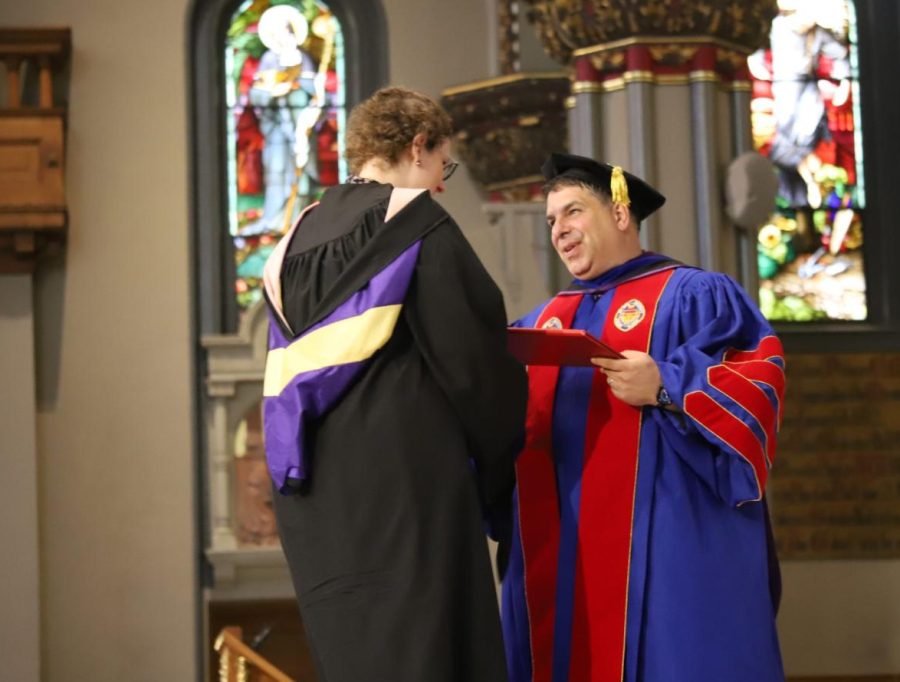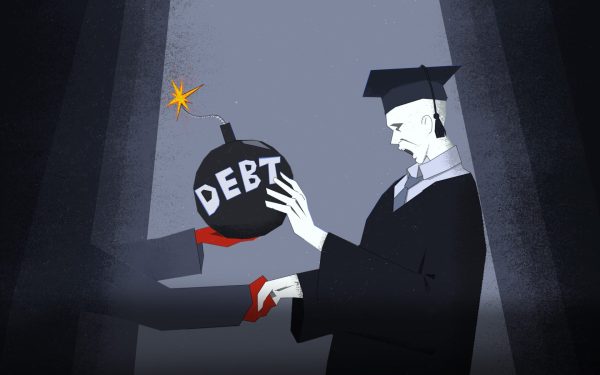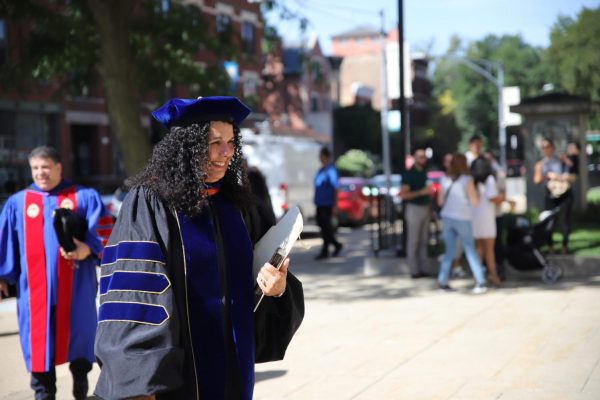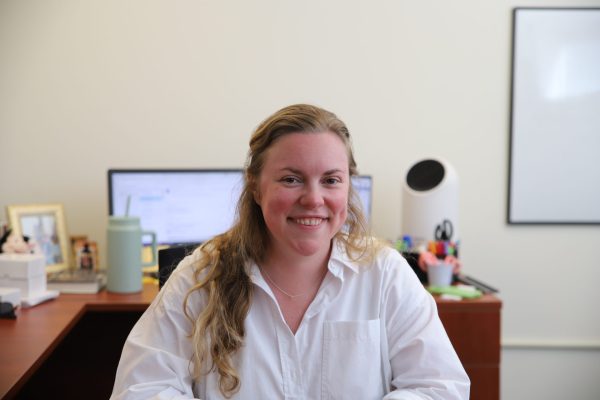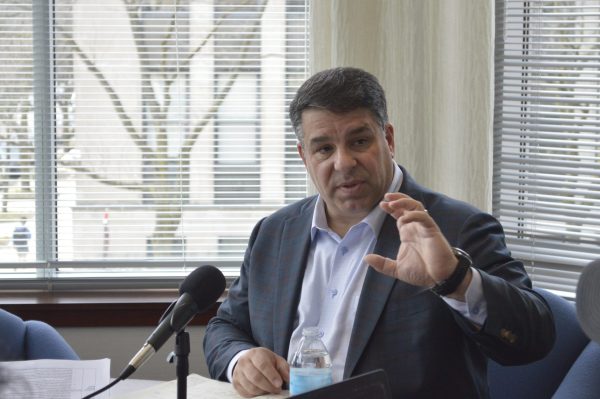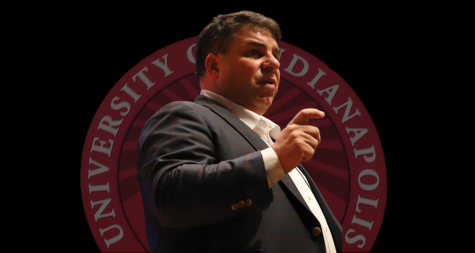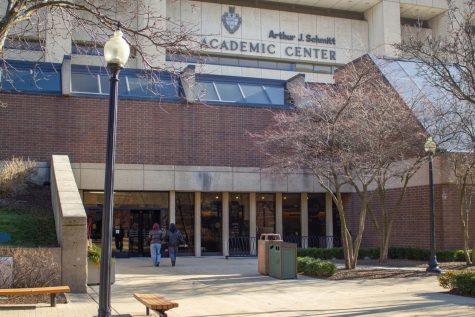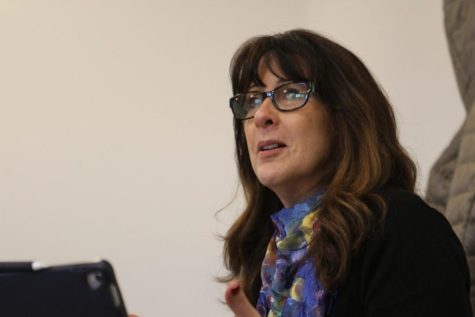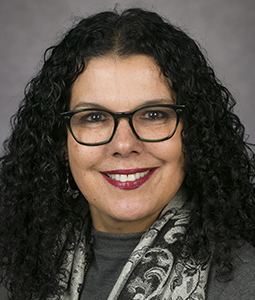President Manuel shares thoughts on DePaul’s future with Faculty Council
DePaul President Rob Manuel hands an award to a faculty member at the academic convocation on Sept. 1.
When it was time for DePaul’s President Rob Manuel to speak at Wednesday’s Faculty Council meeting, he approached the whiteboard at the front of the room to write down and underline the word “value.”
“We have to solve this question at the university,” Manuel said.
While the first Faculty Council meeting of the 2022-2023 academic year included much of the usual procedure, such as refining policy language and discussing academic program requirements, the last hour felt out of the ordinary. This period was reserved for a dialogue between Manuel and attending faculty members.
After presenting attendees with the question of “value,” Manuel explained further that, to him, DePaul’s value didn’t necessarily mean the school’s monetary worth, but rather its academic prestige and the value of the education it provides.
Manuel’s predecessor, A. Gabriel Esteban, emphasized growing DePaul’s endowment, or an aggregation of the university’s assets assigned a monetary value. During his tenure, Esteban increased DePaul’s endowment by 80% to $900 million.
At Wednesday’s Faculty Council meeting, Manuel brought up DePaul’s standing amid a current financial goal to raise $500 million. He explained that the university is about halfway to this end goal, but he pondered the usefulness of this fundraising if it doesn’t lead to substantial improvement.
“I don’t know that the first $225 million has done anything to better the university,” he said.
Still, Manuel expressed that raising the university’s “value,” as he defines it, will bring in money anyway. He went on to explain the importance of faculty’s role in raising funds for the university.
“The higher our value is, the more opportunity there is to take revenue and donations and give it to those who can’t pay tuition,” Manuel said. “Donors give because they had a faculty experience that made them want to give. We’ve gotten too far from that.”
Manuel practiced transparency with faculty members in attendance, even sharing his early thoughts of what his plan for the university would entail once it’s unveiled. Involving faculty in conversations surrounding the university’s direction could come as a relief, as the university’s recent faculty climate survey showed nearly two-thirds of faculty felt that university executives did not consider employee feedback in decision making.
Multiple faculty council members in attendance told Manuel they were “heartened” by his effort to make faculty a part of the conversation. Towards the end of the meeting, Manuel expressed his interest in attending the next council meeting in October.
Esteban did not attend a Faculty Council meeting in the final 16 months of his tenure, according to archived meeting minutes.
At Wednesday’s meeting, various faculty members voiced their opinion that there is a need for more tenure track positions within some of the programs at DePaul and that enlarging the pool of tenured faculty would better the university if the board of trustees was to allow it.
Manuel explained how he views his role in this effort.
“The board doesn’t always understand that tenured faculty contributes to the school’s value and the strength of academic programs,” he said. “My job is to show them why [those things] are important.”
He didn’t shy away from expressing to faculty that adding tenured lines should be seriously considered.
“I see no problem in thinking about how new lines can be tenured and how to convert term faculty to tenured,” Manuel said.
While both parties have important roles in constituting change at DePaul, faculty government and Manuel understand that one party cannot achieve much without the support and collaboration of the other. At Wednesday’s meeting, Manuel told faculty in attendance that his plan can’t be achieved without their support and collaboration. He also told faculty that getting DePaul to where he wants it to be won’t be easy.
“Give me a little time,” he said. “This is a massive redesign. . .the execution of how we do this is going to be really difficult.”
Connect with Patrick Sloan-Turner: @PatSloanTurner | online@depauliaonline.com


